Preparing For The Next Normal: 4 Trends Affecting Small Business
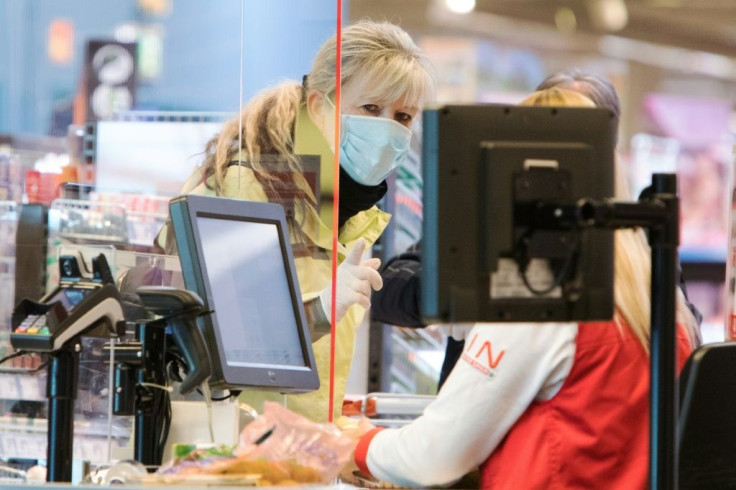
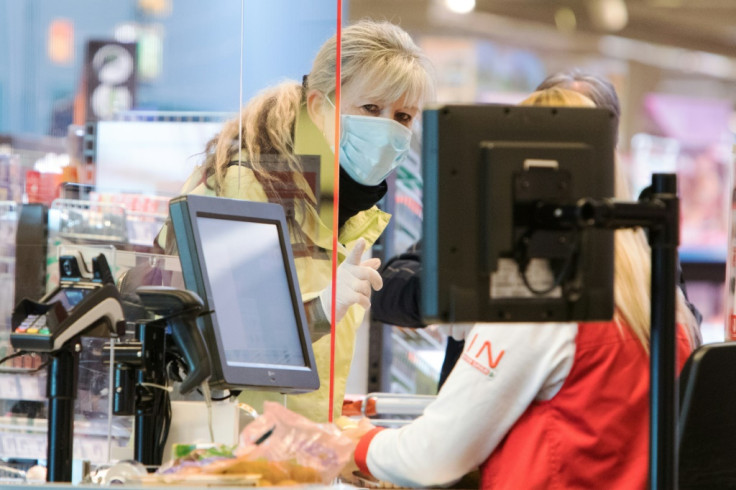
The adage that "the only constant is change" has never seemed more relevant than today. In the past three months, COVID-19 disrupts any notion of "business as usual," as more has changed in just a few months than had in the past several years.
However, we were already in the midst of another, very transformative change before COVID-19. Whether you call it a digital revolution, digital transformation, the information era, or something else, it's become obvious that businesses that take a data-driven approach to understand, predict and respond to market and competitive trends increasingly fare much better than those that don't.
As the old normal recedes into the rear view mirror, some of the "next normal" realities that were already in progress due to digital transformation are coming into sharper focus. While no one fully understands how everything will play out, the writing is on the wall for four transformative trends that SMBs will need to prepare to navigate through.
Work from Home is Here to Stay
The trend towards work from home (WFM) had been rising significantly prior to COVID 19. According to Flexjobs, WFM jobs had grown by 44% over the past 5 years.
And SMB Group's 2019 SMB 360: Connecting the Dots Between Business and Technology Study indicated that about three-quarters of SMBs said they had options in place for employees to work from home. But, in that survey, we also found that in the majority of companies, only a small percentage (1% to 10%) of workers were working remotely on a regular basis.
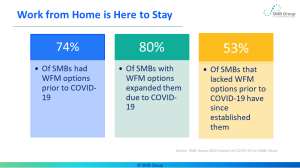
However, necessity is the mother of invention--or innovation. Due to COVID-19 and related stay-at-home guidelines and mandates, work at home has spiked. SMB Group's Impact of COVID-19 on SMBs Study revealed that 80% of SMBs with existing work-from-home programs expanded them. Meanwhile, among SMBs that lacked work from home options prior to the pandemic, 24% established them, and 29% plan to do so.
Although there are bound to be fits and starts as companies adapt, we believe that this shift will be a permanent one for many employers and employees. OWLLabs research indicates that 34% of workers would take a pay cut to work remotely, and that remote workers are 29% more likely to be happy in their jobs than on-site workers.
It's All Virtual
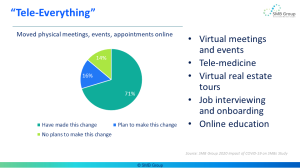
The virtual trend goes well beyond internal employee collaboration. Companies moved swiftly to transition meetings, events and appointments from the physical world to the virtual one, and schools and universities pivoted quickly to online classes.
Soon, almost anything that could be done virtually was being done virtually. Gyms were offering classes online, realtors moved to virtual home tours, and commencements went online. And Blue Cross Blue Shield of Massachusetts reported 180,000 telehealth claims in March 2020, a 5,100% spike compared to the 2019 monthly average of 3,500 claims.
Of course, we could do all of these things virtually before, but it took COVID-19 to bring them into the true mainstream. While some of these activities will swing back to the physical world, I think a hybrid mix of physical and virtual for a long time.
Touch-free Transactions Take Over
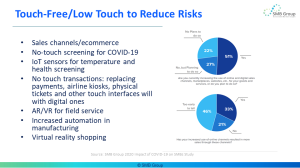
Half of all SMBs are already ramping up online sales to try to replace some of the business they're losing from their traditional in-store or office operations. About one-third of all SMBs say that these initiatives are already paying off.
But this is just a small slice of all of the transactions and interactions that will increasingly become digitized. Retailers are implementing more ''touchless" in-store shopping and checkout and payments technology. But it won't stop there because people don't want to touch anything -- even menus. For instance, SpeedPro is launching InfoLnkX, a touchless menu system for restaurants. InfoLnkX will be positioned within signage at a restaurant's high-interaction customer touchpoints, such as host stands and dining tables. Customers need only hold their phones up to the sign or decal which then opens the restaurant or brewery's menu via the web browser on each guest's mobile device.
The Cloud Shines Brighter
If there's a silver lining in this crisis, it's that online solutions are enabling many knowledge workers to work from home.
Most SMBs were already using several cloud and SaaS solutions prior to the pandemic--and many quickly put new ones in place as they sent workers home.

Now, SMBs increasingly see cloud solutions as business lifelines supporting them through this crisis. A majority of SMBs rated them as extremely valuable in helping them to sustain their companies during these difficult times.
Top honors go to online cloud-based business applications, web/video conferencing solutions, remote IT and access solutions, and real-time collaboration.
But all categories of cloud solutions have demonstrated their worth during this challenging time--lifting cloud to become the preferred deployment method in almost all application areas.
New Trends Call for New Strategies
If you've gone about with a "business as usual" approach prior to COVID-19, I get it. Change is hard. In relatively "normal" times, it's all too easy to put the blinders on and convince yourself that your business won't be impacted -- even as change swirls around you.
But this pandemic has ripped the blinders off and is making change mandatory for survival. Think about these trends and others you see emerging in your business and industry. Tune into new trends, and prepare your business to pivot as needed to capitalize on opportunities and mitigate threats.
The role that technology will play in helping you run a successful business will only grow. Businesses that are agile -- and can evaluate different scenarios, and pivot quickly and efficiently have big advantages over those that can't. Consider where you will need to swap out old software and clunky processes with more modern, automated solutions so that you can spend less time on process and more time on moving your business forward.
Laurie McCabe is co-founder of SMB Group, a Boston-based research, analysis, and consulting firm focused on technology adoption and trends in the small and medium business market.
© Copyright IBTimes 2024. All rights reserved.





















